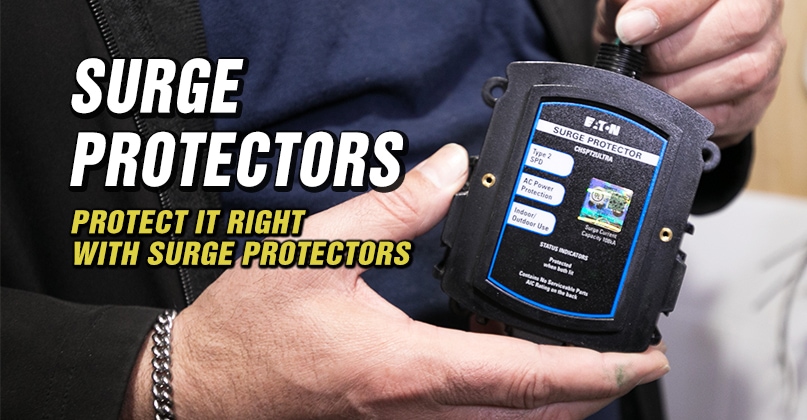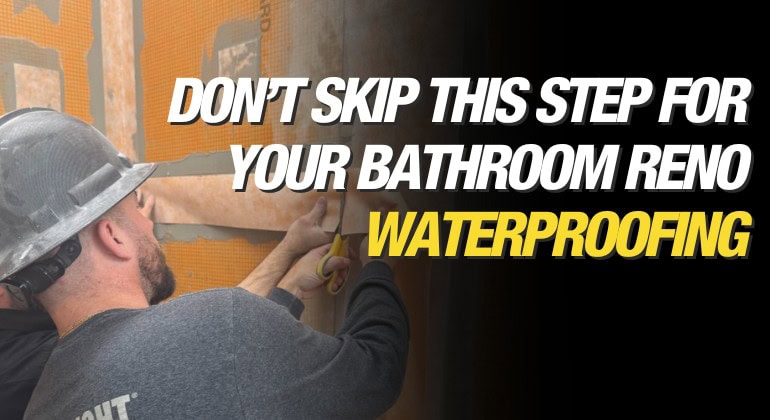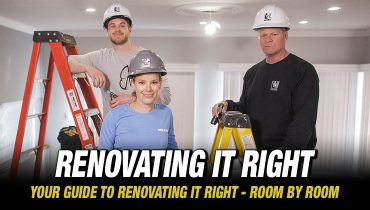I always stress the importance of waterproofing in a bathroom. A well-executed bathroom renovation can greatly improve both the functionality and appearance of your space. However, even the most stunning...

Protect It Right with Surge Protectors
By Mike Holmes
Mike’s Advice / Home Safety & Maintenance
Wednesday, November 27th, 2019 @ 3:42pm
Filming on a live construction site isn’t easy. We film hours and hours of construction and most of it doesn’t make it into the final edit. You can’t fix a house in an hour – no matter what most renovation shows depict. I am very passionate about educating people on the right products and the best installation practices and of course when to bring in a pro. One of the segments in my shows that generates the most amount of emails and inquiries is when we install whole home surge protectors. You spend thousands of dollars on your appliances. PROTECT IT RIGHT with a surge protector!
We install one in every single home we work on, even if we are not touching the electrical work in that house. I always recommend you PROTECT IT RIGHT and a whole home surge protector is a MUST!
What Exactly Is a Surge?
A power surge is a significant increase in voltage that can last three nanoseconds or more. If the surge is high enough, it can cause some heavy damage to your home appliances. Trust me, I know. I once had a power surge and lost thousands of dollars in appliances – including a brand new TV. That hurt.
Surges can be caused by unexpected weather events such as lightning and storms or even maintenance work and faulty wiring.
These are just some of the appliances that may be affected if there is a power surge:
- Refrigerator
- Dishwasher
- Laundry appliances
- Air conditioner
- Stove
- Microwave
- Electronic devices
Think about how much money you’ve spent on these AND how much they will cost to replace. You don’t want to run into a situation where lightning strikes and you are left with thousands of dollars in damages because you didn’t have the level of protection needed.
Surge Protectors or Surge Strips?
Surge/power strips and surge protectors are two different things. Often times homeowners will buy surge strips to protect their entertainment centres, mobile devices and computers. These are fairly inexpensive to purchase and pretty much just plug into a wall directly. Some people even take their power strips when they travel, which isn’t a bad idea. But it’s important to note that a surge strip only provides partial protection in that specific outlet.
A whole-home surge protector offers much more protection. If you live in an area prone to thunderstorms, this is a must. Even small surges or spikes can destroy your appliances and electronics over time.
Why Install a Whole Home Surge Protector?
Think about how much money you have spent on your appliances. All it takes is one power surge to damage those appliances. The surge protector can provide whole-home protection for your appliances.
How does it work? A licensed electrician can install it at your home’s breaker panel, so if there is ever a surge, the device will stop it from traveling through your home. It’s the ultimate surge protection for your home. We install the Eaton surge protector every time we are renovating or fixing a home. It’s for the premium protection of the homeowners.
A surge protector can be installed outside or inside an electrical panel or load centre. It detects an increase in voltage and safely diverts it through your home’s grounding path.
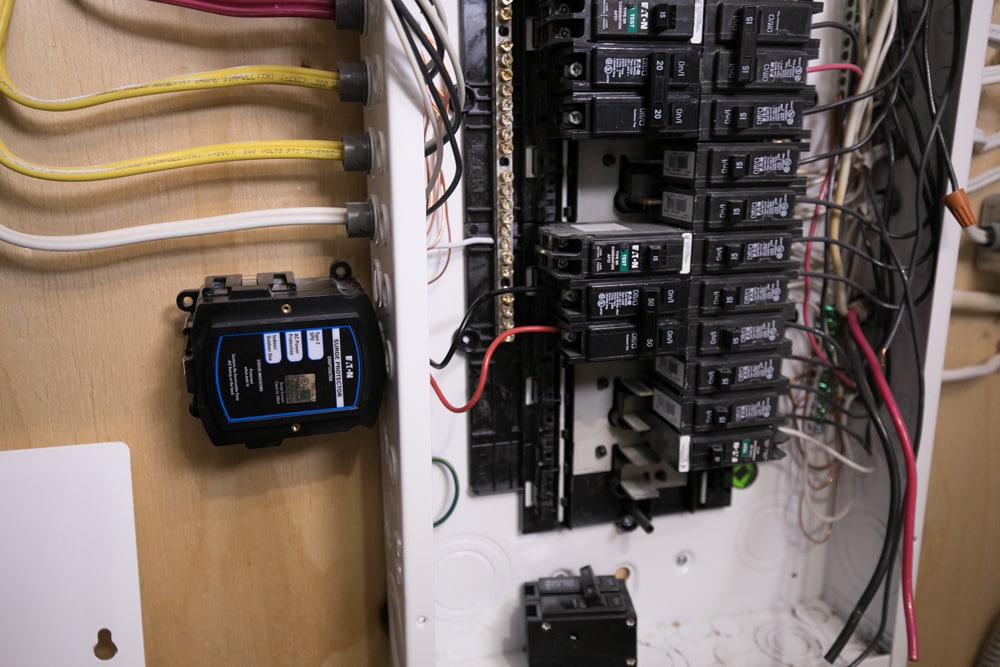
Don’t attempt to install this yourselves, folks. Improper wiring or installation can be quite dangerous, and I feel like I’ve seen it all by now.
Surge Protector in New Home Construction
I love that builders are stepping up to include whole-home surge protection when they are building or renovating homes. My partner Miller Contracting in Prince Albert decided two years ago to make Eaton whole home surge suppression a standard feature in their new homes. This is what they say: “So many things in our modern homes are computer-controlled – refrigerators, clothes washers, clothes dryers, microwave ovens, dishwashers, and our tablets that are plugged in. Our power grid is continually supplying our homes with little power spikes. Over time, those spikes can ruin electronics. So, surge protection fits with the kind of homes we build for our clients – more durable, less expensive to operate, and longer-lasting.” Dan Yungwirth, Miller Contracting.
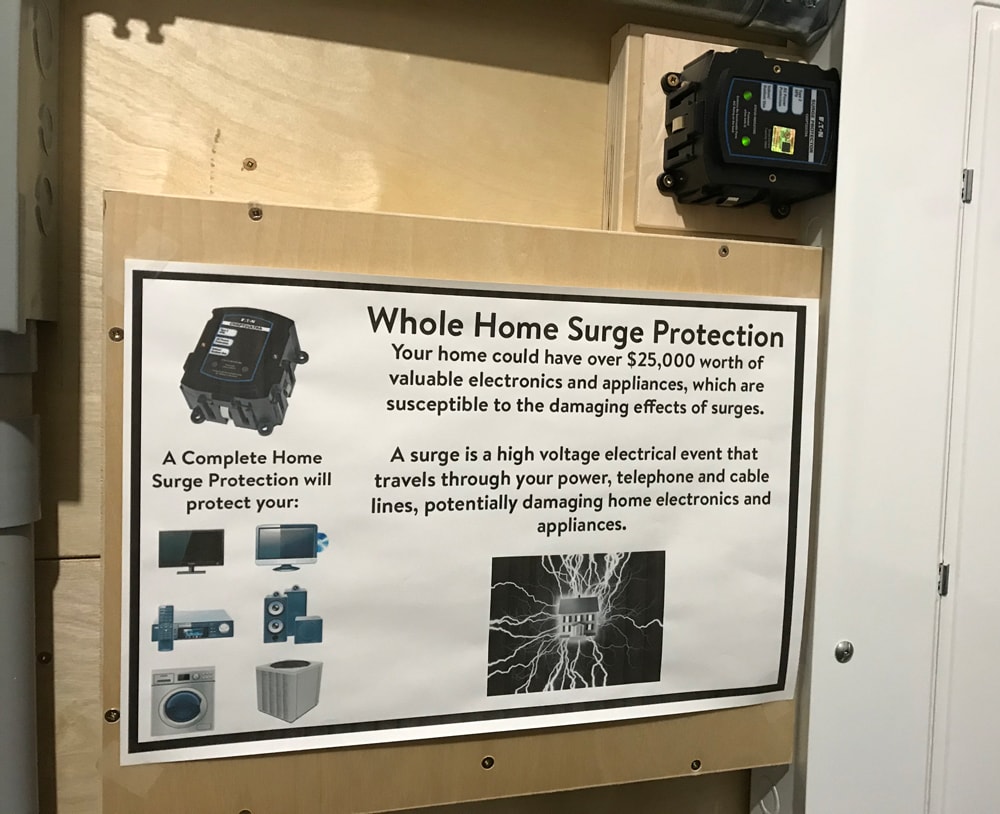
“We install Eaton’s Complete Home Surge Protector in all of our homes. Our clients appreciate the peace of mind it offers. It is very easy to install and the 2 bright green lights indicating all is well is a welcome sight during our windy storms. If you want to protect the best in your home, we recommend you use the best protector. And that’s why we chose Eaton.” – Carmen Zerkee, Sonbuilt Homes
Check out some truly bizarre electrical work I’ve come across in my Electrical Fails blog.
